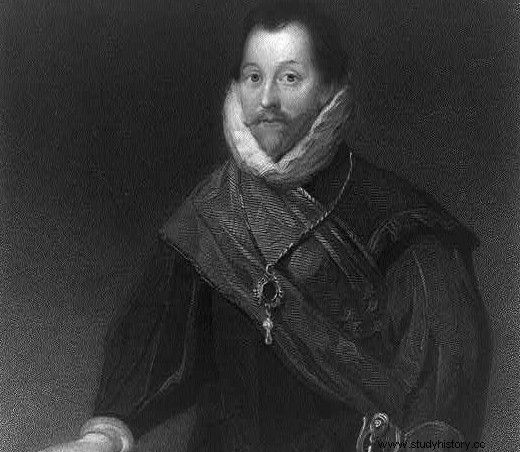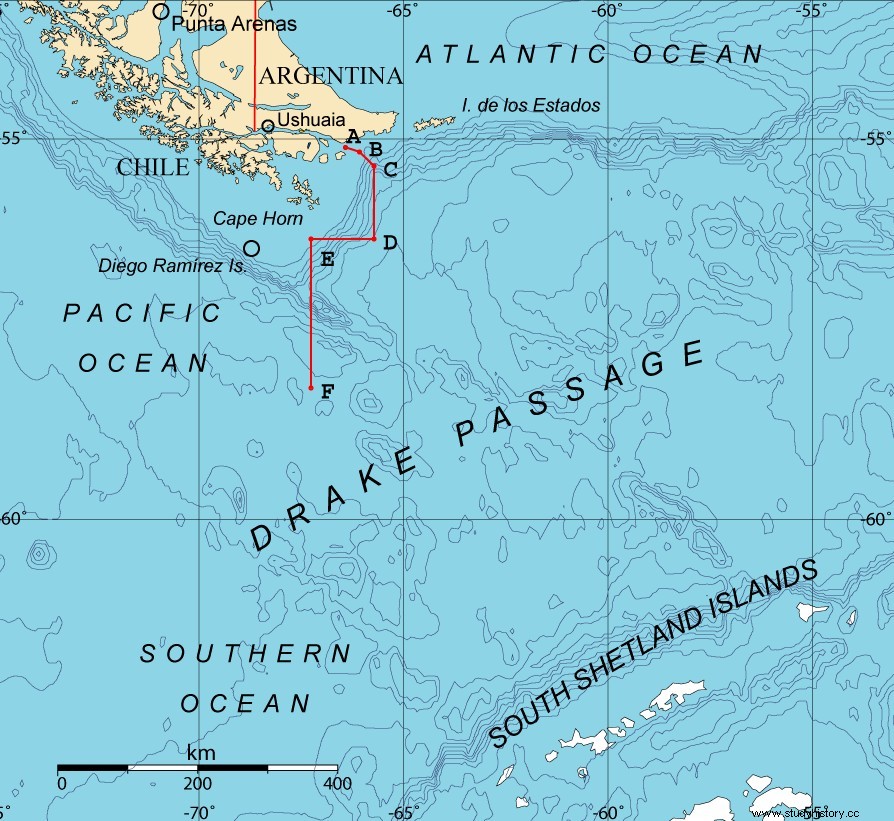It is a strange story that a pirate becomes a hero, but there is certainly such an example in world history.
Among them, Barbaros Hayreddin, who led the battle of Preveza to victory as the Ottoman Navy Admiral, and Francis Drake, who participated in the Battle of Armada as a deputy, have become legends that have been handed down to the present day as national heroes.
The Great Pirate Francis Drake

Drake was born in 1543 in southern England. His father was a farmer when Drake was born, but eventually turned into a minister, and his brothers seemed to be many, and Drake supported the family's life as the eldest son of twelve brothers.
By the time he reached 10, he began to work as a sailor, and his enthusiastic work was recognized and he was handed over the ship. Drake goes on a journey as soon as he sells the ship, and then boarded a slave ship operated by his relative John Hawkins to engage in the slave trade.
Hawkins made a fortune in smuggling, and Drake, who benefited from it, procured his own ship, the Judith, and grew into a part of the Hawkins fleet.
However, a big incident occurs in Drake and Hawkins.
The incident, later called the Revenge of San Juan de Urua, began when the Hawkins fleet sailing the Caribbean Sea was forced to repair in a storm.
At this time, the Hawkins fleet relied on the nearest port, San Juan de Urua, which was dominated by the Spaniards. Even more unfortunately, the Spanish Martin Enriquez de Almansa, who will be appointed Lieutenant Governor of Mexico at the same time, will lead 13 ships to call at San Juan de Urua.
Perhaps Hawkins knew this information in advance, he had already established control of San Juan de Urua and allowed Almansa's ships to call and replenish each other on the condition that they were inviolable.
However, Almansa broke that promise and assaulted the Hawkins fleet, destroying the fleet that was completely ambushed. There were only two survivors, the Minion, the Hawkins ship, and the Judith, on which Drake rides.
After being boiled, Drake devises his plans for revenge at San Juan de Urua. Drake, who took over the Swan from Hawkins, stuffed a large amount of his cannons and ammunition and attacked Panama, where the wealth of Spain gathers. However, this fails due to the fierce resistance of the Spanish soldiers.
Drake, who gave up the capture of the fort, conducted a thorough interview with local humans, attacked a Spanish transporter by land, and succeeded in obtaining about 30 tons of gold and silver treasure by scattering Spanish garrison soldiers. did.
The amount was so large that it had to be buried under the soil on the way.
Drake brought a large amount of gold and silver treasure to England, which was enthusiastically welcomed by the people, but of course the King of Spain was furious and demanded that Queen Elizabeth of England hand over Drake or be sentenced to death.
Queen Elizabeth hasn't made a name for herself here if she's obediently handed over.
After this day, Drake goes missing. One theory is that Queen Elizabeth may have hidden herself.
Three years later, in 1576, Queen Elizabeth sponsored Drake as if there were no incidents, and Drake embarked on a circumnavigation journey around the world.
Around the world for the second person
In 1522, Fildenant Magellan's fleet succeeds in the world's first round the world. Magellan himself died in the Philippines, but it can be said that Spain gained command of the sea in the world, and Spain was in a position to lead other countries in maritime trade.
The second is Francis Drake.

The route was to depart from Plymouth, pass through the southern part of the Americas from the west coast of Africa, pass through the United States, the Philippines, and then return to South Africa, but it is characteristic that it passes through the Cape of Good Hope. It can be said that. It can be said that Vasco da Gama's open route was established at this time, and it is also characteristic that it is not close to Japan or China at this time.
By the way, the Honnoji Incident happened in 1582, and if Drake relied on Japan, Japan's diplomatic history might have changed significantly. However, it is not necessary to pass through Japan to go around the world, so Japan's strategic value is low from a European perspective, and it is not very attractive as a trading port, which avoids colonization. It can be said that it is one of the factors that were created.
Drake passes through the strait between South America and Antarctica on this voyage, which is now called the Drake Passage.

Upon returning, Drake brought a great deal of wealth back to England, where the treasure allowed Queen Elizabeth to repay her debt, and Levant was founded, with the profits later creating an East India Company.
Indirectly, Drake is one of the creators of the East India Company.
Queen Elizabeth praised Drake for her achievements, giving her the title of Knight at this time.
Despite being a pirate, Drake was listed as a quasi-nobleman.
After his return, Drake ransacked the Caribbean Sea as a privateer and repeatedly plundered from the match against Spain.
However, King Philip II of Spain could not stand the repeated barbarism of pirates and sent the invincible fleet Armada to England with the forgiveness of the Pope.
Spanish Armada Battle

When the battle with Spain became decisive, Queen Elizabeth appointed Charles Howard as governor and Francis Drake as adjutant.
The famous Armada naval battle in history.
The result is a big win in England. The Spanish fleet is virtually destroyed due to infectious diseases and storms. Since then, England has continued to decline, and the victorious England will continue to develop.
Behind the victory in the Armada naval battle, the operation by Drake was successful.
Drake surprised the Armada fleet before it attacked and plundered the moored merchant ships. This was successful, leaving behind the saying, "Well, I just burned the beard of the King of Spain."
Drake succeeded in delaying preparations for Spain by attacking merchant ships arriving in Spain, and even when a large-scale battle began, Drake boldly launched an attack on Spain.
Drake of later years
Even after the Battle of Armada, Drake's activity was active, assaulting Lisbon and ruining the Caribbean Sea. Drake was unable to make a big contribution at this time due to Spain's strong defense, but even after 50, Drake was still in the sea, and in 1596 he died on board. He is 55 years old.
Personal evaluation of Francis Drake

Francis Drake is a great hero in British history.
Without Drake, the British Empire would not have developed later.
With the wealth he brought, the East India Company was founded and his success was able to defeat the great power Spain. Even today, a statue of Francis Drake stands in the port of Plymouth, showing its popularity.
Not everything Francis Drake did was an act that could be praised for letting go, but he did a lawless barbaric act such as the slave trade and looting, but because he was protected by Queen Elizabeth, that act was justified in a sense. It can be said that it was made into.
Pirates are not necessarily outlaws, and it can be said that this area is still popular today.
The criminal law has traditionally had the idea of "result worthless" and "action worthless", and the question is whether the result is bad or the act is bad, but when you think about Drake, his actions and results. Was not a sin because it was justified by the state.
"If you kill one person, you are a murderer, but if you kill everyone on the battlefield, you become a hero."
That's the line of Chaplin's movie, but watching Drake makes me think that any act is a heroic act if the state justifies it.
Captain Kidd and Francis Drake, who will be executed later. It is interesting to compare the lives of these two people.
Their actions do not seem to change much on the sidelines, but one is a criminal and the other is a hero.
Not to mention history, it makes me realize that law is also an evaluation in a sense.
